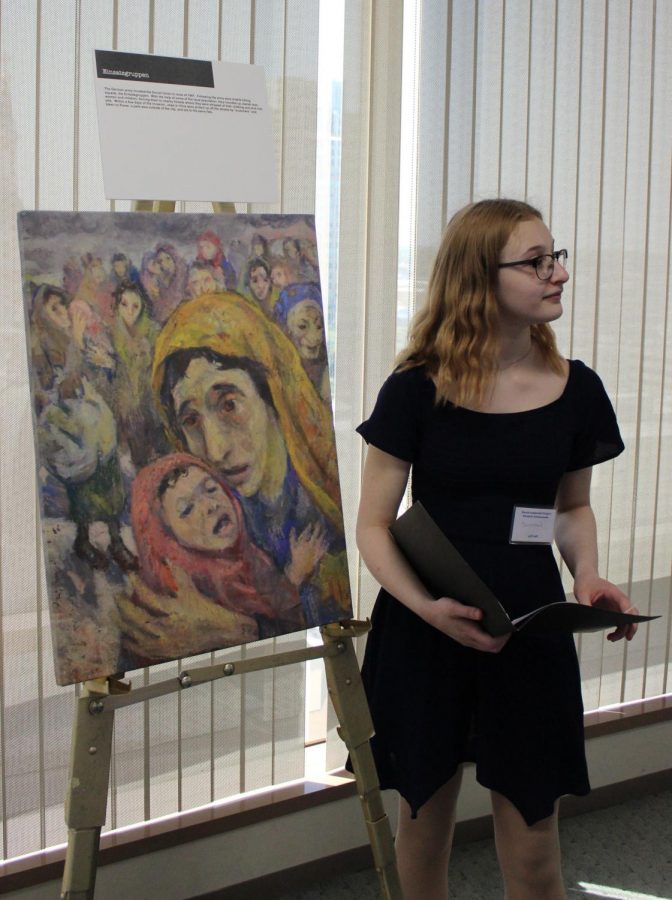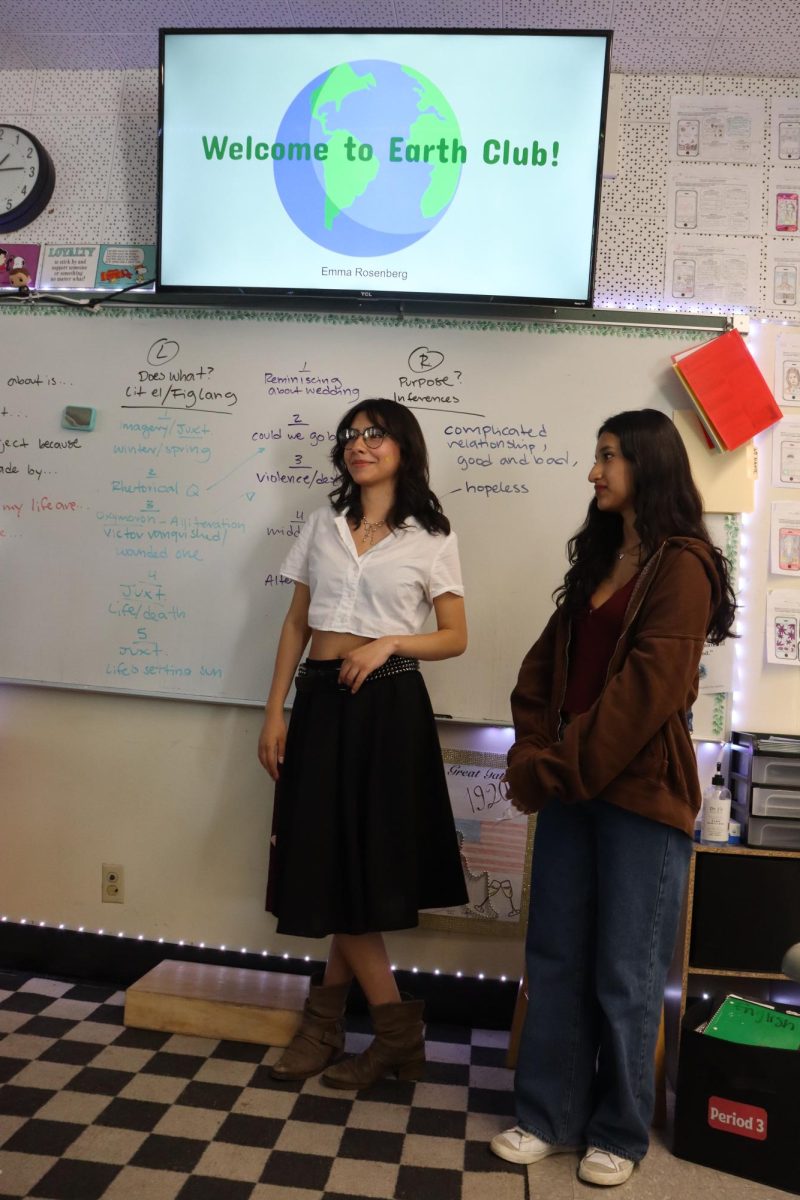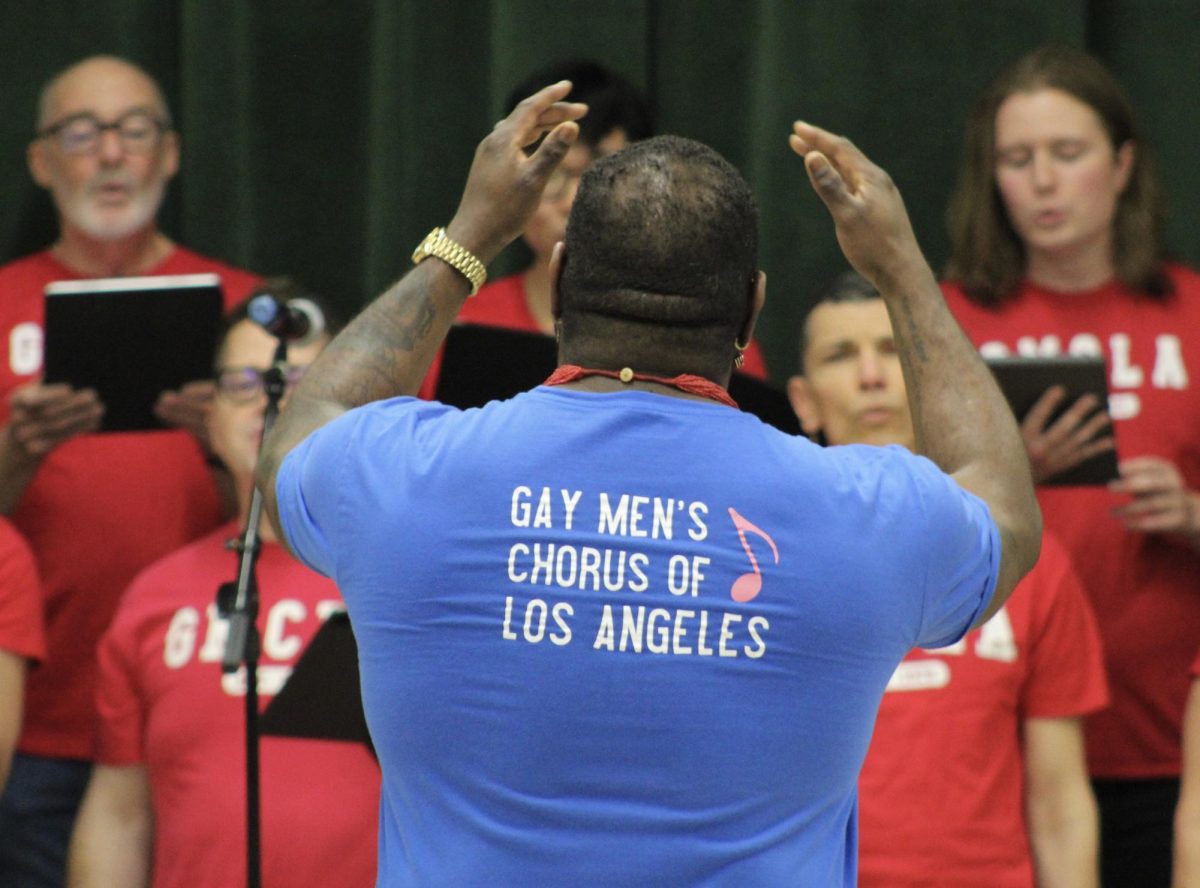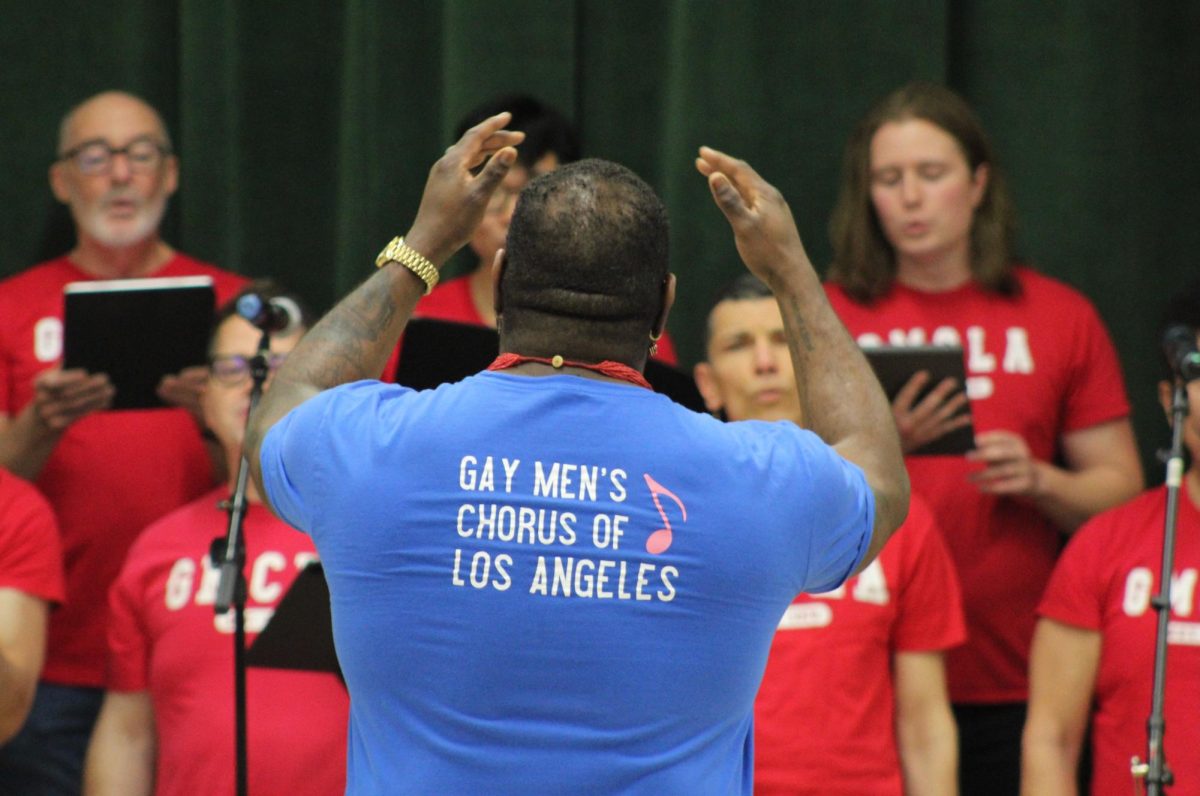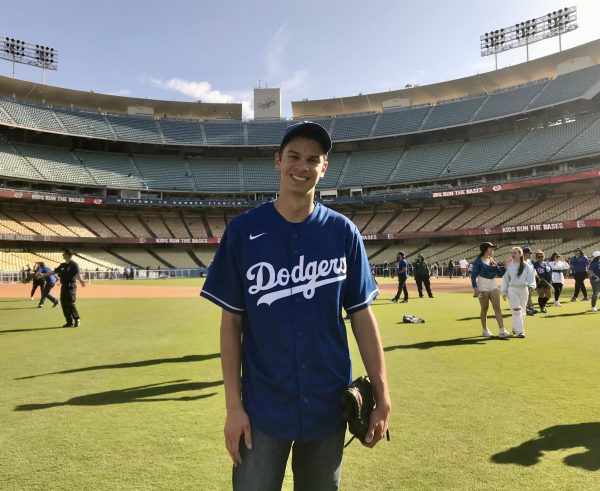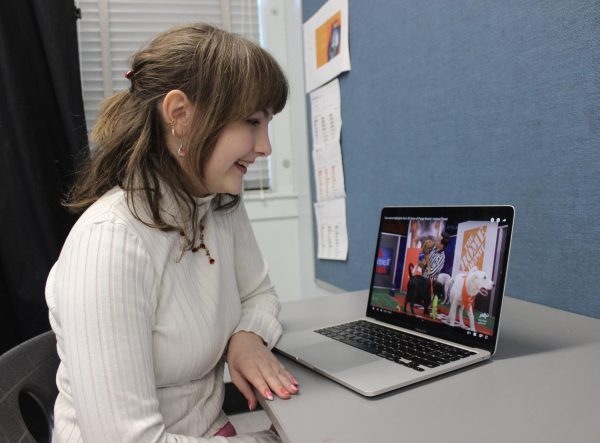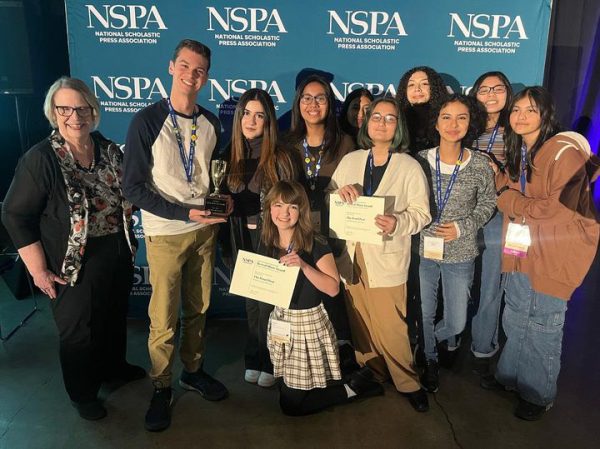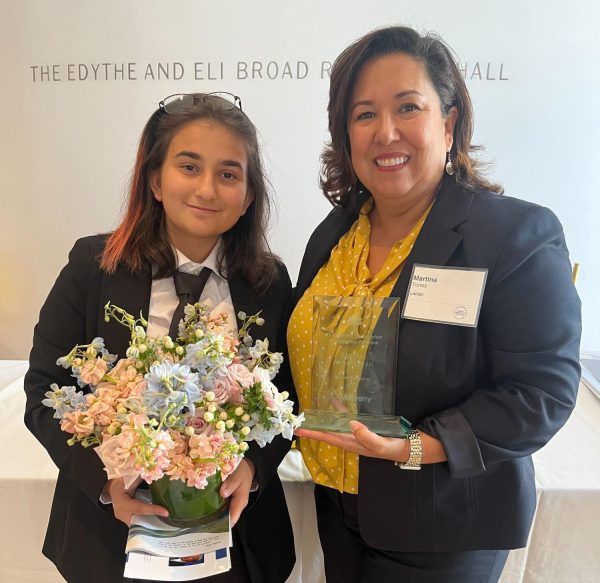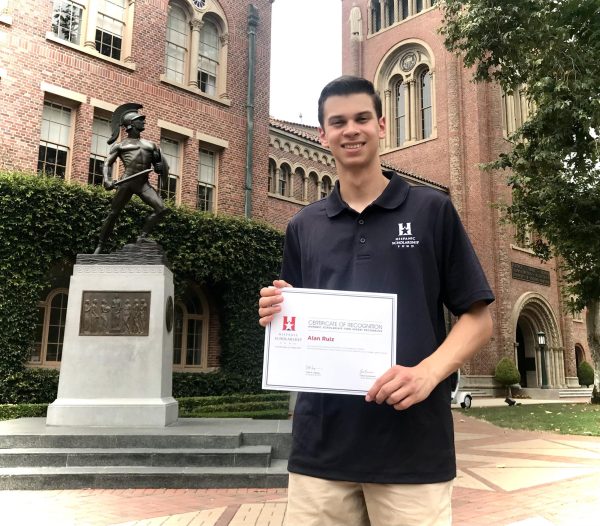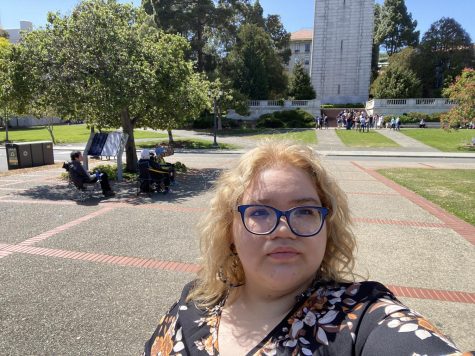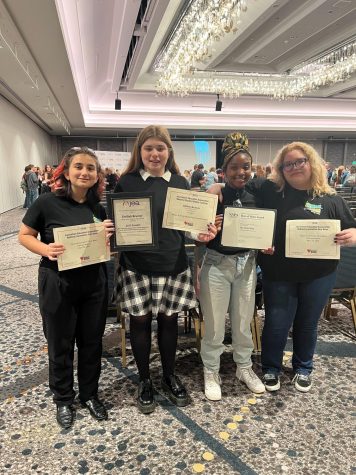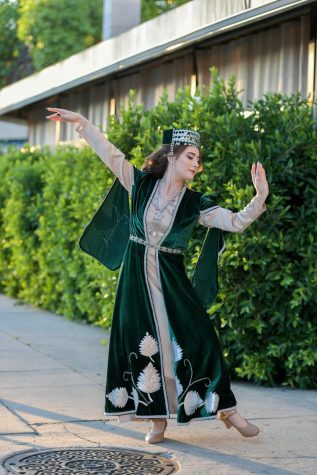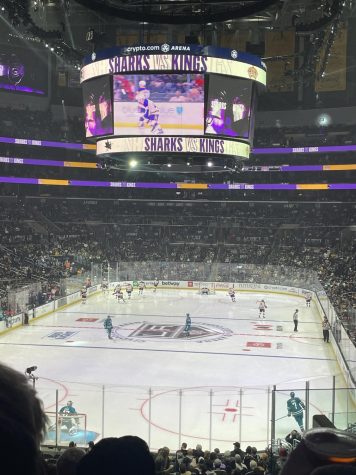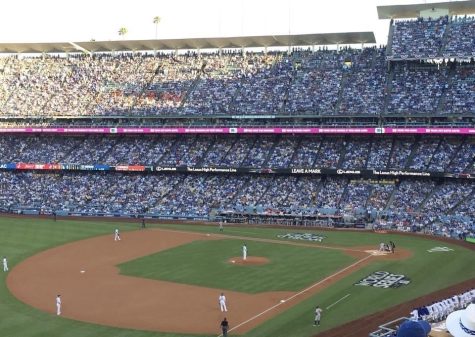Students travel to state capital to present on Holocaust Remembrance Day
May 15, 2019
When Director of Education and Curation Stephanie Wolfson first joined my 10th-grade world history class to recruit students for the David Labkovski Project, I was at first annoyed. I was sure that not a lot of kids would take the subject seriously and wouldn’t care that much about following up on history.
The project is a program dedicated to analyzing, understanding and interpreting Labkovski’s paintings, which serve as a visual diary of the Holocaust based on his experiences along with others before, during and after World War II.
The goal of traveling to Sacramento on April 29 for Holocaust Remembrance Day was to give brief historical context to each of Labkovski’s paintings. The four Daniel Pearl Magnet High School students (myself, sophomores Susannah Ness and Marquis Johnson and senior Steven Guzman) were invited to give additional information to politicians at the State Capitol. Principal Deb Smith and history teacher Francisco Ortega accompanied us to this event. I think of it as a promotional event to boost awareness of the program.
What interested me the most was that the World War II aspect of the program wasn’t entirely focused on Hitler and his regime but rather how places such as Vilna were specifically affected, especially since Vilna isn’t located in Germany. I was intrigued by the history of Vilna and how such a small town that seemed at first to have no real significance in the war but had whole libraries based around it.
As soon as we approached the State Capitol, we set up the around 10 paintings that we personally thought best represented Labkovski and his legacy.
Next was our tour of the state capitol of California. What stood out most to me was the Greek-inspired architecture. The ceiling’s intricate use of pink, cream white and blue reminded me of a bathhouse in Ancient Greece. The Assembly Hall had a red color scheme with a huge painting of George Washington looming over the bottom. Above the painting was a small statue of Athena made of gold. I later found out that the use of Athena was meant to signify California becoming a state without first being a territory.
Next was the Senate floor, which had a green color scheme featuring a framed picture of Abraham Lincoln. Funny enough, the only reason the painting of Abraham Lincoln was even planted there was because of better recognition amongst the public. The former occupant of the spot: John Sutter, a pioneer that contributed greatly to the Gold Rush, establishing Sutter’s Fort that would eventually become Sacramento, California. Originally a painting of Sutter wasn’t that recognizable amongst the general public, people were getting annoyed explaining who he was that they just placed Lincoln.
We stayed in the Senate for around two to three hours listening to the proposition of different laws. Some laws were based around drunk driving.
Eventually, the senators began discussing anecdotes, statistics and historical context of the Holocaust as well as survivors and descendants of survivors. Up to this point in the seating area above the Senate, there we different programs transitioning in and out of the room as the Senate meeting progressed, but we kept our same place the entire time. Smith explained to me that we had passes that allowed us to stay seated. Soon after the last personal account of a Holocaust survivor, we were name-dropped and received applause.
Lunch made me, along with the whole group, realize how tired we all were, as some of us had to wake up at 3 in the morning in order to get to the airport.
The Holocaust Remembrance event went by generally quickly. The four of us students were given separate folders that contained maps for separate paintings. I was assigned to a self-portrait of Labkovski in the Gulag. His left eyebrow was risen, his eyes pale blue and clothes hanging off of his skin; the color scheme was mainly shades of blue, gray and yellowish-brown to establish the mood of a dead man walking.
As spectators came over to my painting and read the text panel on the right of the painting, it became clearer to me what Labkovski was trying to express from this intimidating stare the self-portrait held with passersby. I explained out loud how Labkovski’s stare was meant to leave an impression on onlookers in order for them to get a feel for what he has endured at the Gulag: disease, malnutrition, depression, anger, disbelief that any torture like this could exist. When passersby caught that cold, dead glance, it forced them to look twice at the sunken face, of the scars for those who would like to forget and move on, like the people of Israel. Those five-minute explanations and interpretations of his work gave me the most joy and rush of abstract thought, analysis and understanding of any piece of art. What was more surprising was that I had never been assigned that painting until that day.
My ideal future is simply creating. I’ve learned over time that as a creator, you have to expose yourself to various creative styles and artists in order to perfect your own. Labkovski’s work taught me that there is more than one way to process a traumatic event or tragedy in your life, being a visual diary of WWII.
This man inspired me as an artist, a curator and a speaker. His work has shown me that the profession of being an “artist” has more diversity than what we are exposed to. His work inspires us to learn history at more than one angle.


